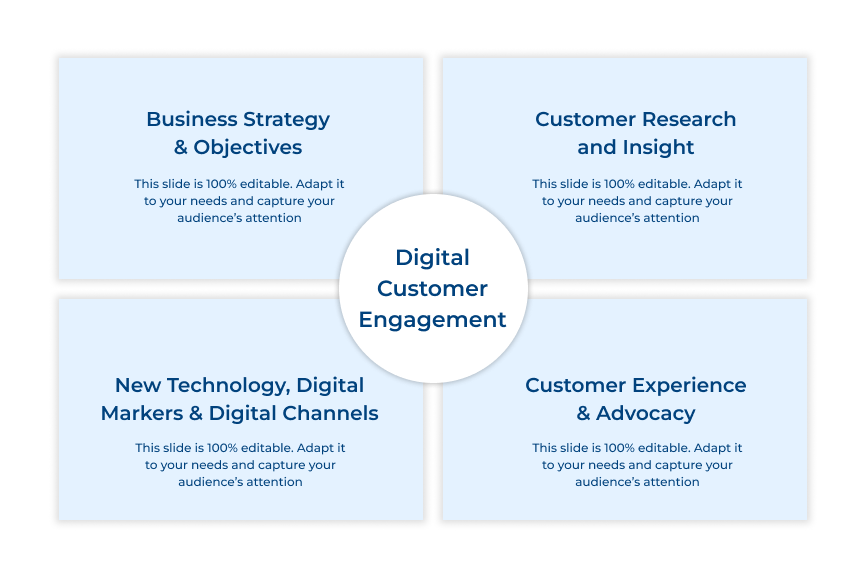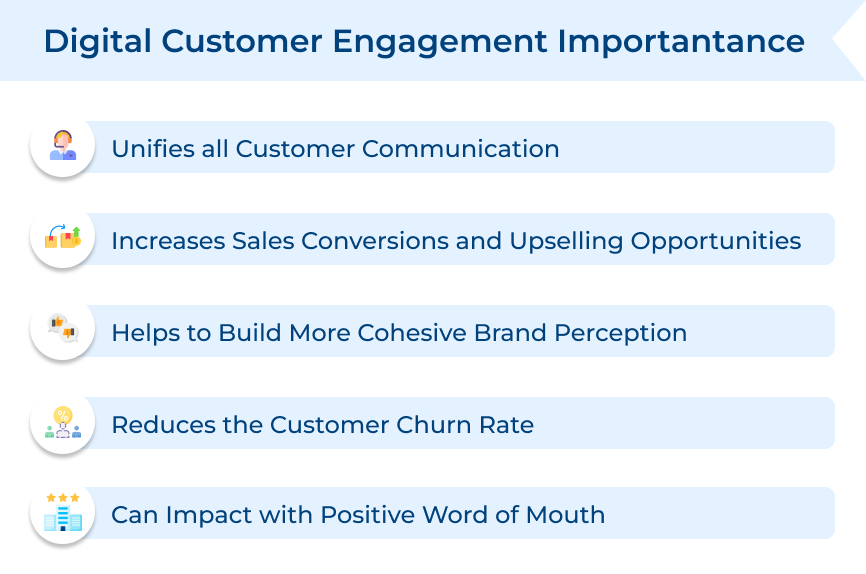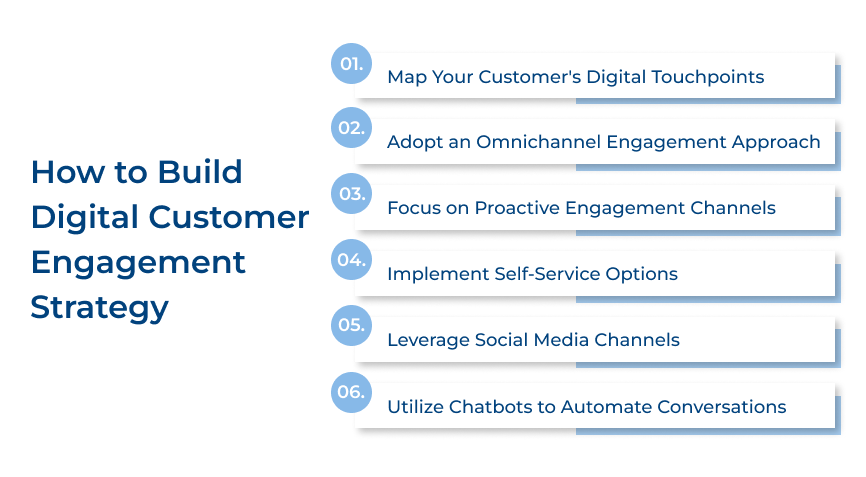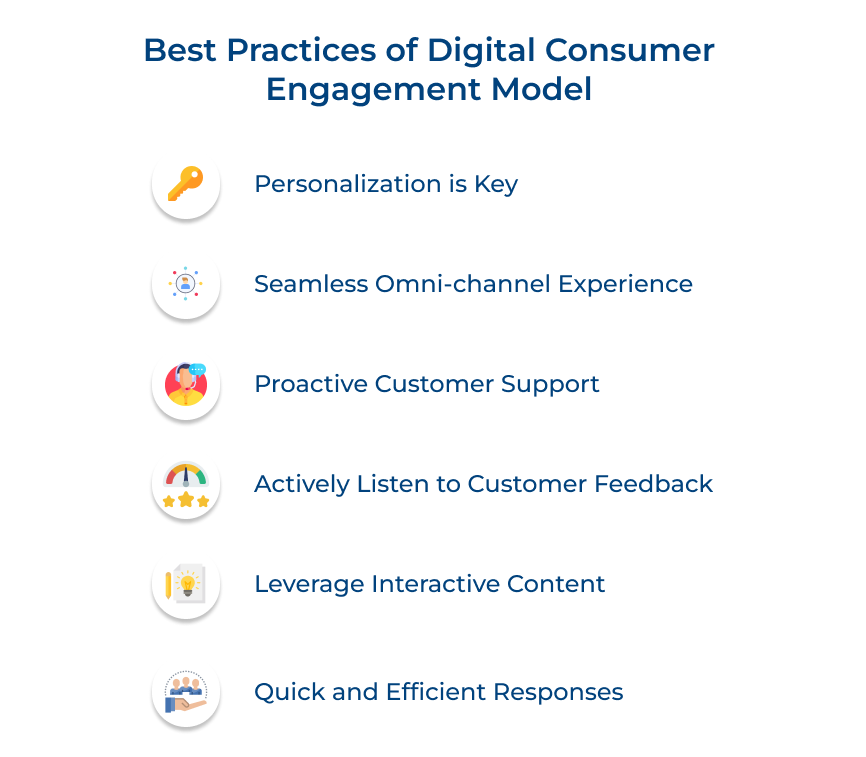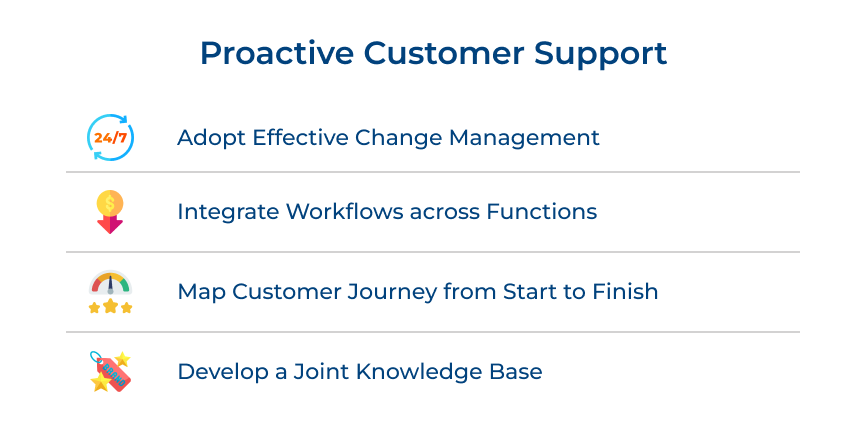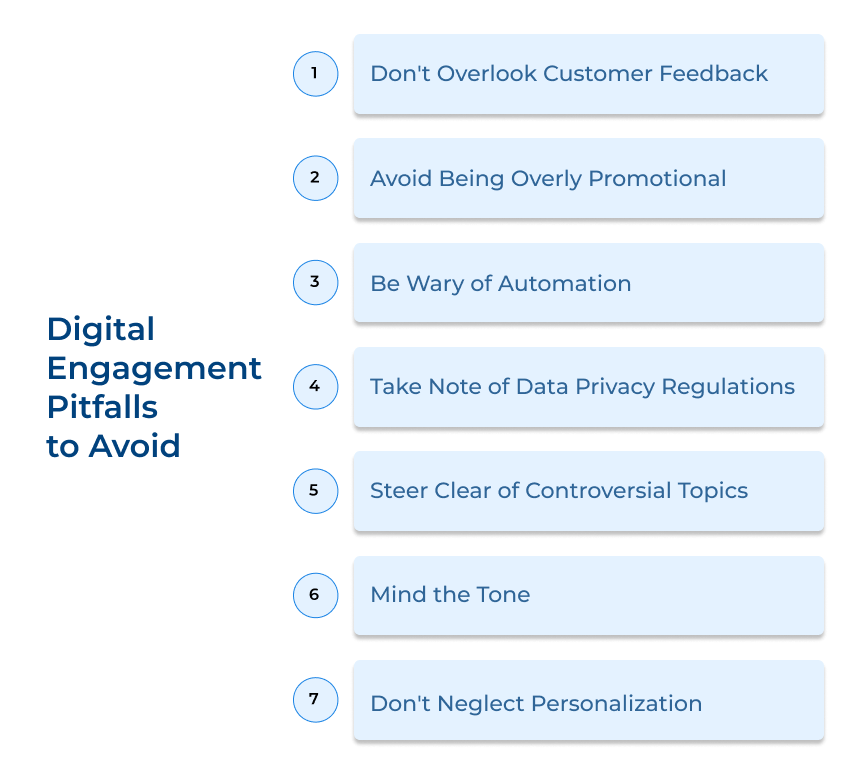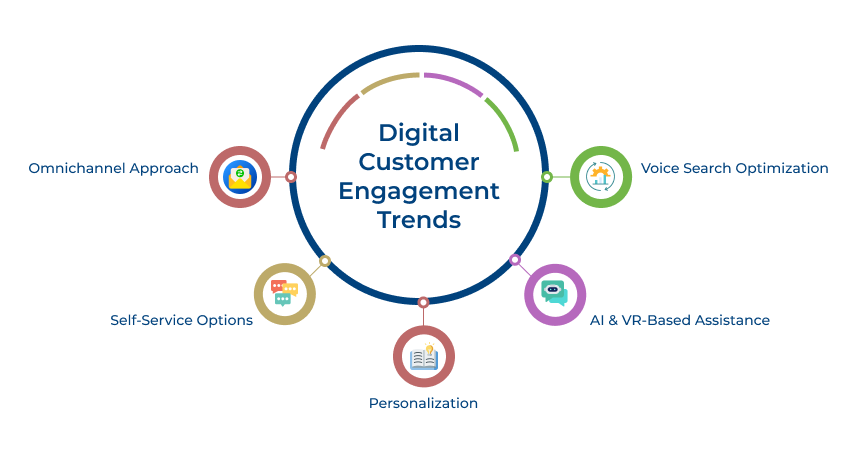-
Map Your Customer’s Digital Touchpoints
Knowing your customer’s journey is key to developing a successful digital engagement strategy. Understand every point of contact between your company and its customers. It will enable you to maximize the value of each client engagement.
Make sure to map out how customers are engaging and where they are leaving feedback across multiple channels – emails, social media channels, chatbot, etc. Monitoring these points of contact will ensure you are creating a personalized experience for each customer.
-
Adopt an Omnichannel Engagement Approach
Companies need to invest in a wide range of different channels to engage customers. Having an omnichannel approach to digital transformation customer engagement is becoming increasingly popular. Customers who engage with three or more channels are 90% more likely to return for another purchase. Retention for such brands is more than 65%.
An omnichannel approach means having active and engaging social media accounts, an email newsletter, blog content, website content, chatbots, and more. Utilizing multiple channels also gives you a way to direct traffic across your other channels while giving customers multiple ways of contacting you when they need assistance.
-
Focus on Proactive Engagement Channels
Make sure you don’t wait for your customers to contact you first. Instead, use proactive engagement channels to remind them about your service or product. It can be done through automated emails sent at regular intervals about the latest news from your company. It can also be informative content related to your product or some helpful tips.
A proactive customer service staff can respond quickly when there are queries from potential customers or reviews from existing customers. They address their concerns almost immediately – leading to higher customer satisfaction ratings as well as increased purchases and loyalty over time.
-
Implement Self-Service Options
Enable customers to access information quickly and independently through self-service options, avoiding needing direct assistance from staff or agents. Include options such as FAQs, searchable knowledge bases, or automated support systems on your website.
More than 65% of customers prefer self-service over speaking to a customer service representative. Companies need to invest in self-service options like knowledge bases, chatbots, and online forums. It enhances service experience and cuts unnecessary overhead costs from direct phone or in-person support.
-
Leverage Social Media Channels
Social media serves as a potent engagement tool. It connects your brand or product with potential customers across various channels. Besides offering insights into customer behavior, it keeps you at the forefront of potential customers’ minds through regular message broadcasting using images, videos, and copy.
Intelligently employing social media channels helps to gather valuable customer feedback, build strong customer relationships and boost customer loyalty. Videos posted on social media have earned new customers for 93% of brands.
-
Utilize Chatbots to Automate Conversations
Chatbots are becoming an integral tool in digital engagement best practices. AI enables brands to engage in unprecedented human-like conversations with customers, granting them the freedom to interact at their convenience. As chatbots are available 24/7 from any location, they swiftly respond to queries.
Customers don’t have to wait for hours or days for a reply from customer service representatives. It also helps reduce costs as chatbot interaction is often handled without the need for manual labor costs or overhead investments associated with traditional methods like phone calls or in-person visits from representatives.
Digital Consumer Engagement Model Best Practices
Explore the best practices that can elevate your digital engagement efforts and help you connect with consumers on a deeper level.






